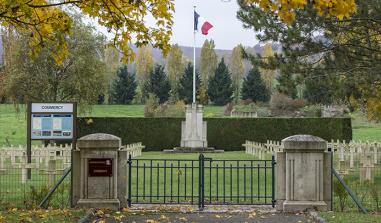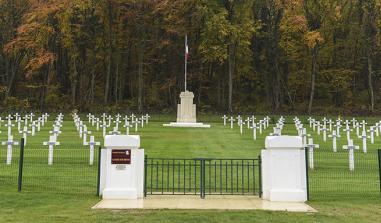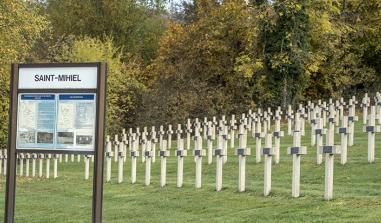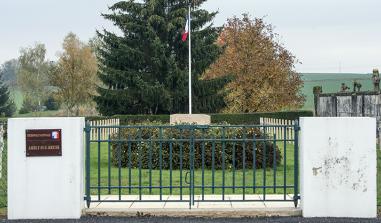Saint-Mihiel Salient

Tranchée. ©Office de Tourisme de Saint-Mihiel
On 7th September, two German divisions gather near Saint-Mihiel and march on the town...
The battles of the Twentieth Century changed the shape of the world, but how many tears... ravaged countries... bereaved, mourning, defeated, sacrificed, seriously damaged nations.... Some of the Great War's Battles took place in la Meuse between 1914 and 1918. Our "sad souls" here are Verdun, the Argonne, Les Éparges, and the Saillant de St Mihiel... taking the time to discover them and understand them means that the memory of all the men that died here will live on.
As the years pass, the duty to remember becomes a duty to tell the story of what happened. The Germans had wanted to take the fortified town of Verdun from the very beginning of the war. So in September 1914 they advance more than 20km into French territory, moving from Bois-le-Prêtre to Les Eparges, via St Mihiel. This corner of France (the St Mihiel Salient) remains under German control until the Americans come in 1918, despite several bloody French effensives in the intermittent years. After September 1914, the main French goal will be to try to get back the terrain taken by the Germans, and reduce the surface area of the Salient. The Bois d'Ailly and the Tranchée de la Soif (Trench of Thirst) bear witness to the suffering of Commander André's men, forced to surrender to the Germans in May 1915 because they had neither food nor water. Marbotte Church became a makeshift hospital, providing shelter for so many injured and dying soldiers that its floor was stained red with blood. The Bois Brûlé (The Burned Forest) is one of the places that best represents battles above ground: it also reveals the proximity of the French and German troops. It is also here that Sergeant Péricard commanded, "Debout les morts!" ("Dead men, Rise!") on 8th April 1915. In the Bavarois and Roffignac trenches, you can follow the soldiers' footsteps, climb the firing banks, and look through the openings. This is no ordinary place: it's a battlefield, and deserves your respect.
Association Nationale Le Saillant de St Mihiel 71, rue du Dr Vuillaume 55300 St Mihiel Tél. : 03 29 90 90 07 Regional Tourist Board Tel: 00 33 (0)3 29 45 78 40 b]Conseil Général de la Meuse[/b] Hôtel du Département Place Pierre-François Gossin 55012 Bar-le-Duc cedex Tel: 00 33 (0)3 29 45 77 55 Contact Office de Tourisme de Saint-Mihiel Rue du Palais de Justice 55300 Saint-Mihiel Tel./Fax : 00 33 (0)3 29 89 06 47 Email: otsi.saint-mihiel@wanadoo.fr Information Four memorial platforms indicate remnants from the Great War. The boards and milestones located in car parks and in the forest (30 min. per platform, follow the arrows) also provide you with information. You can visit at any time, and entry is free. Guided Tours upon reservation. A free map of all the 14-18 sites open to the public is available at all the sites and at Meuse tourist information offices.
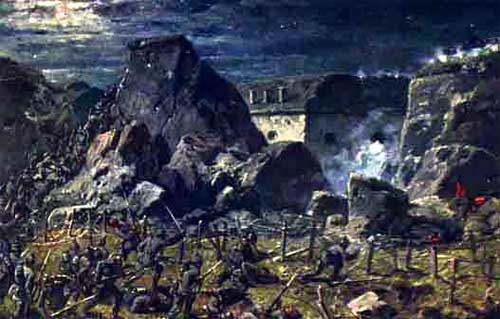
At dawn on September 25th, the Germans began bombing the Camp des Romains fort. Source: perso.wanadoo.fr/..groupescolairedubourg/saillant/
Practical information
55300
Saint-Mihiel
Accessible toute l'année



